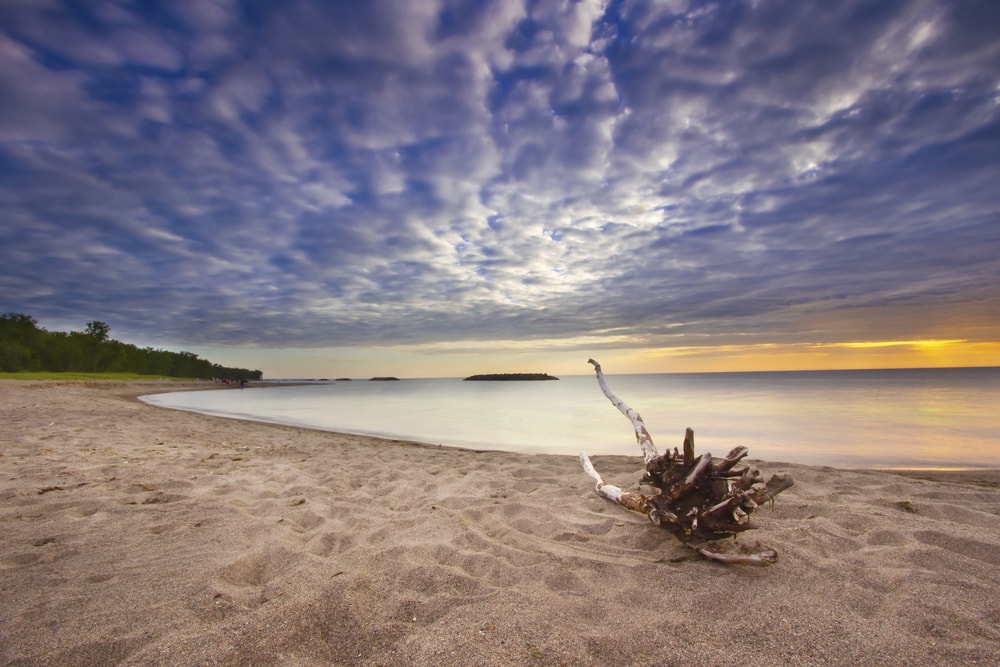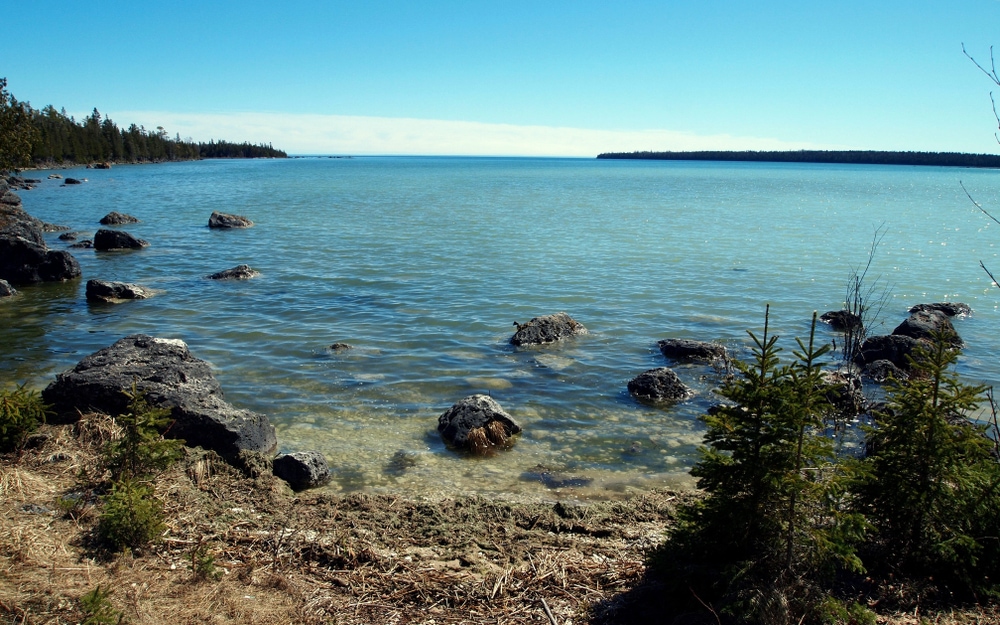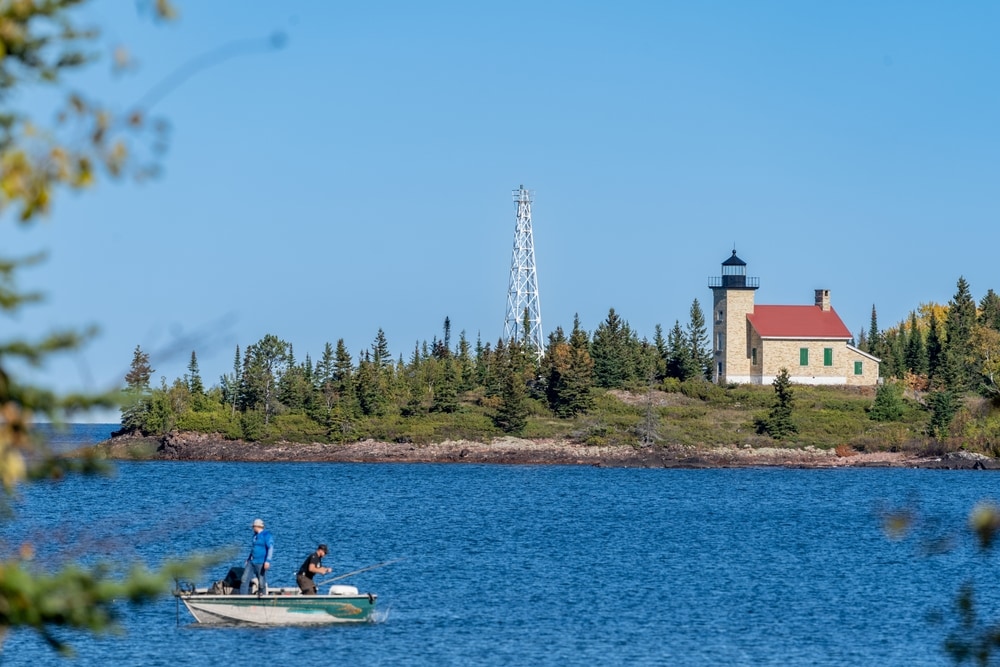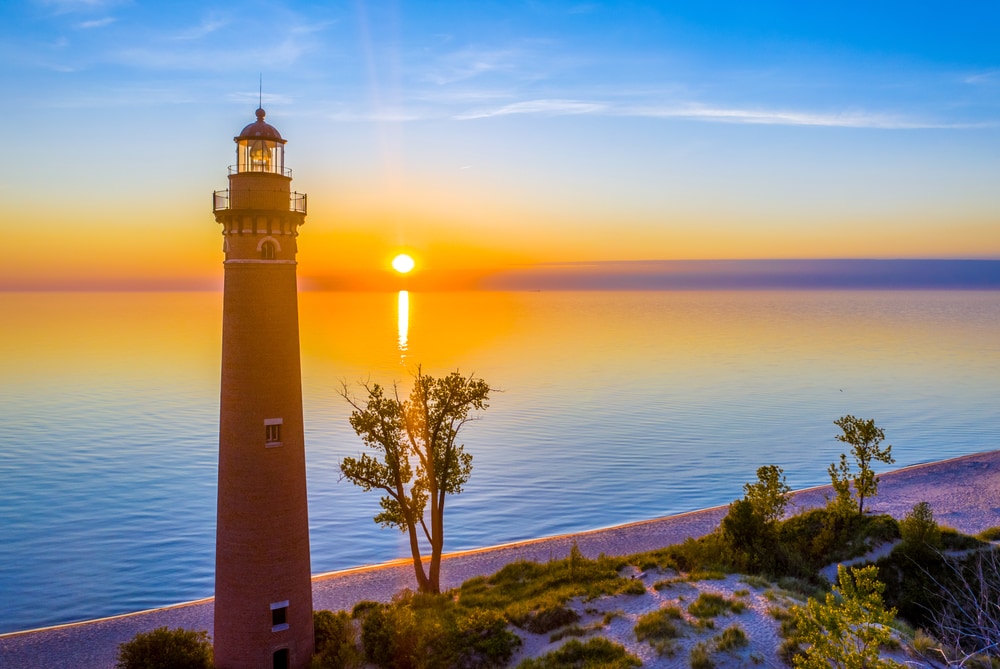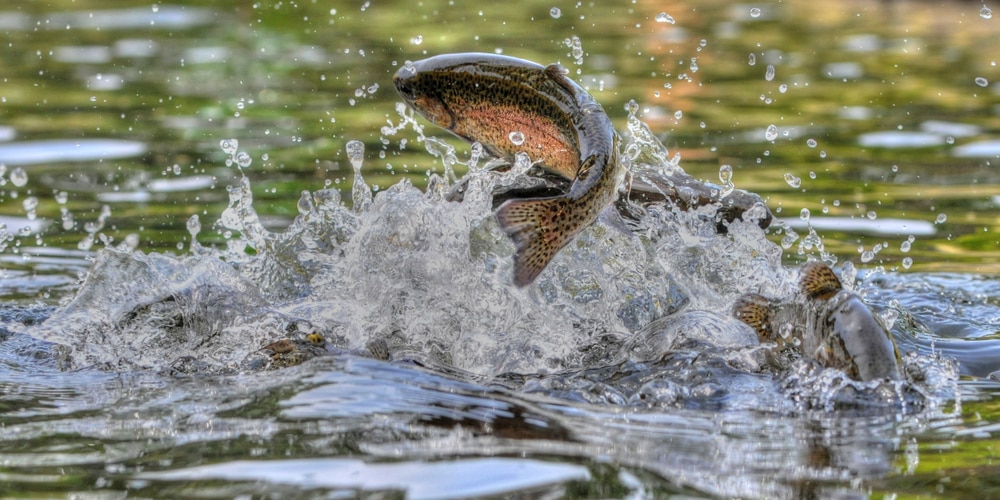
Michigan is a famous sportfishing region when it comes to freshwater fishing. Muskies, pike, salmon, perch, and bass are all big draws for the state, but the most famous fishery revolves around trout.
Five species of trout can be found in Michigan, including brook trout, brown trout, lake trout, rainbow trout, and steelhead. The state was once home to huge populations of native lake trout and brook trout, but these were nearly eliminated through commercial fishing and invasive species.
Currently, lakes in Michigan have healthy trout populations that include introduced species such as steelhead, brown trout, and rainbow trout. Through fish stocking programs, the state keeps the sportfishing industry going. We’ll be discussing five of the best lakes for fishing trout in the state of Michigan.
You May Also Like: What Is Fly Fishing?
What is a Trout Lake?
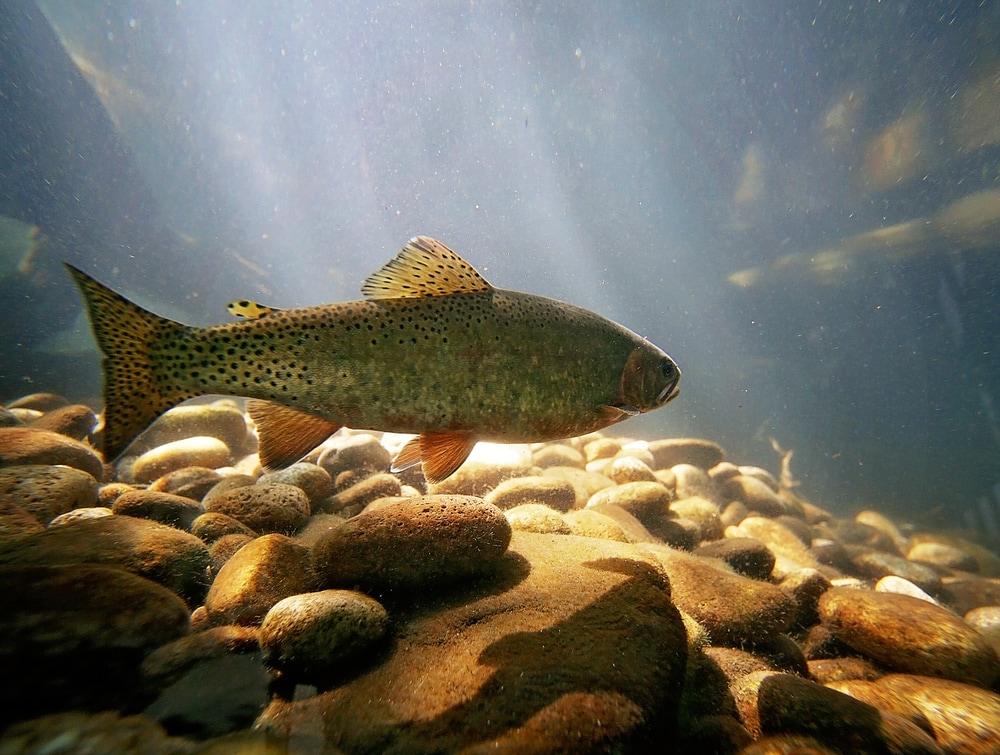
The Department of Natural Resources in Michigan (or Michigan DNR), defines a designated trout lake as a lake in which the predominant game fish is trout. It’s important to note, these lakes have special fishing regulations in place, so before fishing in any of them, consult the Michigan DNR for specific rules.
These lakes are managed specifically to cater to healthy trout populations by the state government. Many of them were at one time seeded with trout fry after the depletion of trout populations in the Great Lakes. Fry from designated trout lakes was at one time used as broodstock for the repopulation of the Great Lakes.
For the purposes of this article, trout lakes and the Great Lakes will both be considered for the list of the best trout fishing lakes in Michigan.
You May Also Like: Types Of Trout: All About Trout And Their Management
What Trout Species Can You Find in Michigan?
1. Brown Trout
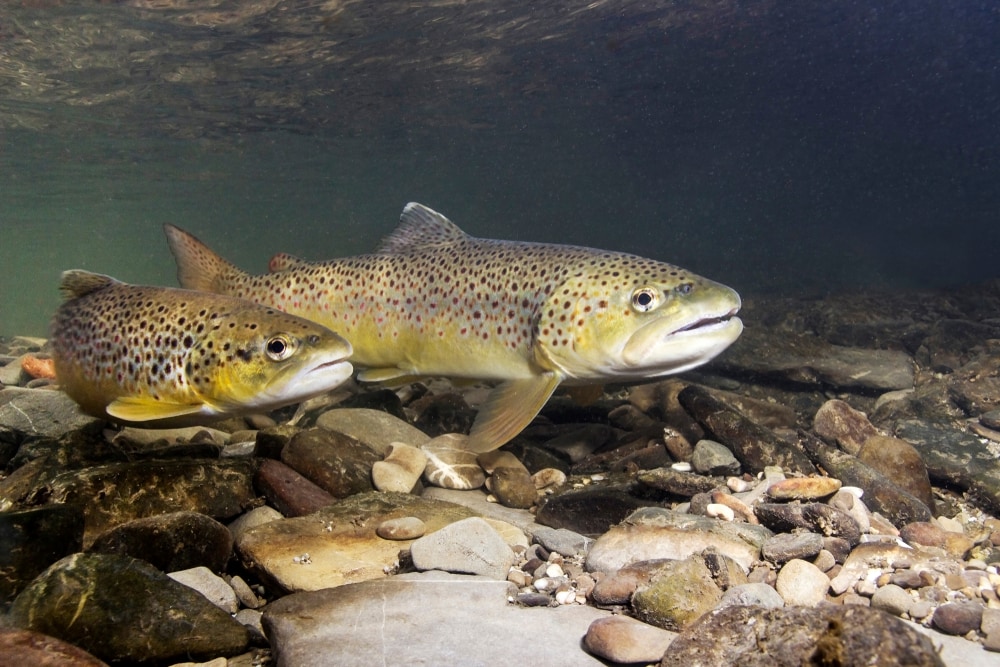
Brown trout tend to grow to lengths between 16-30 inches (40-76 cm) and weigh up to 16 pounds (7.2 kg). In lakes, they take on a mostly silver color and have a dark “X”-shaped mark on their back. Their white mouths, belly spots, and square tails help tell them apart from other trout.
During spawning, they change color to a tan to reddish-brown and their red spots become brighter.
Brown trout are native to Europe and Western Asia. They were introduced to North America in the 1800s, and today are found all across North America.
2. Brook Trout
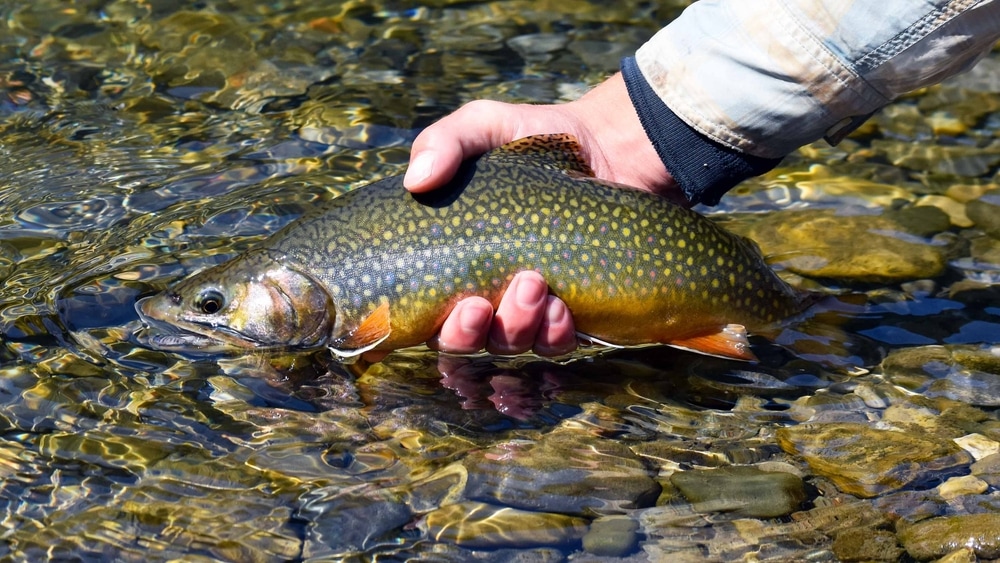
Brook trout tend to grow to lengths between 10-20 inches (25-51 cm)and weigh up to 4 pounds (1.8 kg). Their backs are dark brown or dark green, with red spots that are surrounded by blue halos. Most of them will have reddish hues on the fins on their undersides.
Brook trout are a native species but tend to be river dwellers by nature. The streams and tributaries of the Great Lakes are too cold for them to spawn, so they are also stocked into lakes each year.
3. Lake Trout
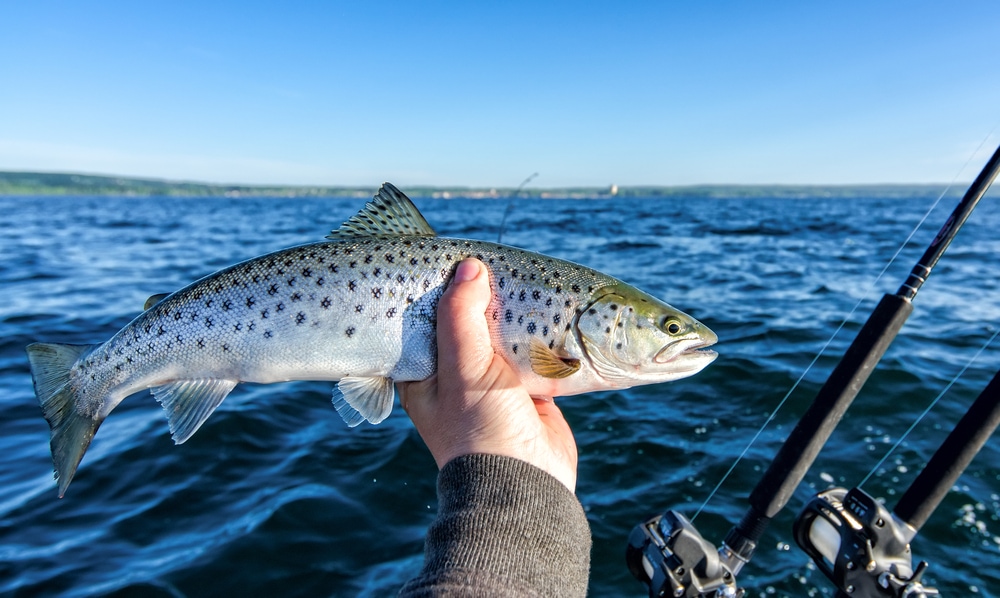
Lake trout tend to grow to lengths between 17-36 inches (43-91 cm) and weigh up to 30 pounds (13 kg). Most of them are colored either a light green or gray to black. Most fish will have light, worm-shaped spots along their backs and sides.
Lake trout are native to Michigan waters but were nearly wiped out in the mid-1900s. Each year, millions of fish are stocked into both trout lakes and the Great Lakes.
4. Rainbow Trout
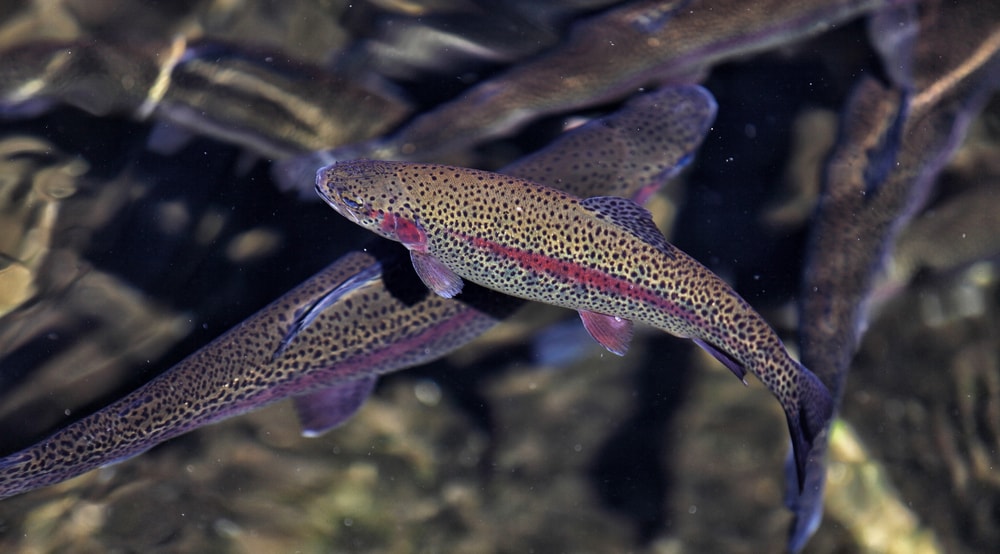
Rainbow trout and steelhead are essentially variations of the same species. Rainbow trout spend their entire life in freshwater, while steelhead naturally migrates from coastal saltwater environments to freshwater.
Rainbow trout grow to 20 pounds (9 kg) on average in lakes, but in their natural rivers, they only reach 5 pounds (2 kg). Most of the time, their coloration is paler than steelheads and they lack the shiny sheen associated with their cousin species.
Rainbow trout are native to the rivers and streams leading to the Pacific Ocean but were introduced as part of a fish repopulation program in the Great Lakes.
5. Steelhead Trout
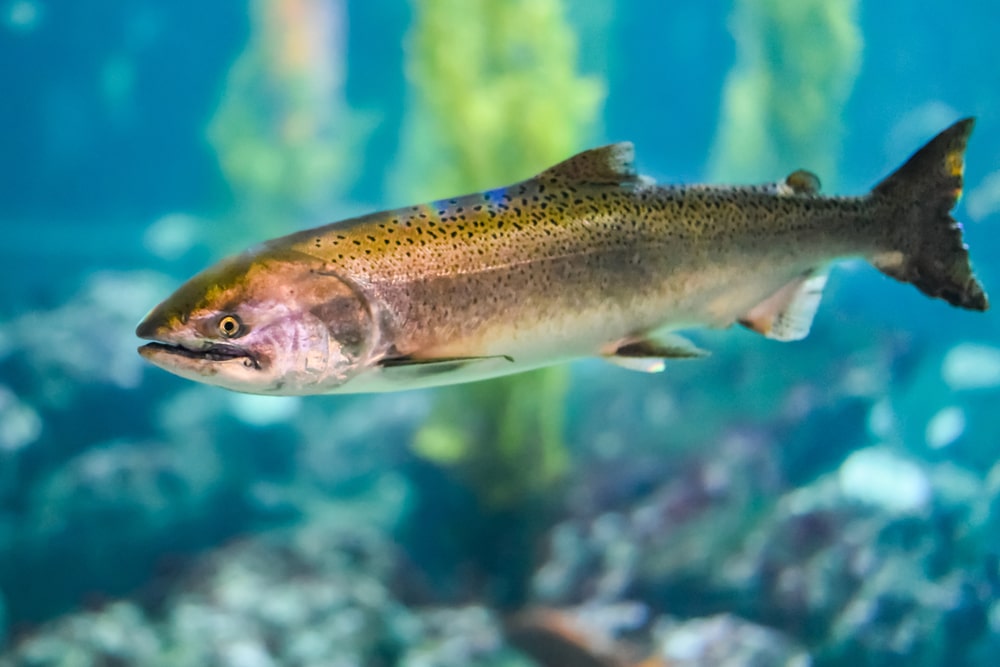
Steelhead trout come in three different strains, depending upon where they were bred. They typically grow to lengths between 30 inches (76.2 cm) and can weigh up to 12 pounds (5.4 kg).
They have a green back, white belly, and silvery sides. Their mouths are white and they have a radiating pattern of spots on their tails.
They’re native to the coastal regions of the western United States and travel to freshwater to spawn. They were introduced to the Great Lakes as part of a repopulation program and survived well in freshwater.
You may also like: Check Out This Ultimate Guide on the Best Camping Places Michigan and All the Fun Things to Do
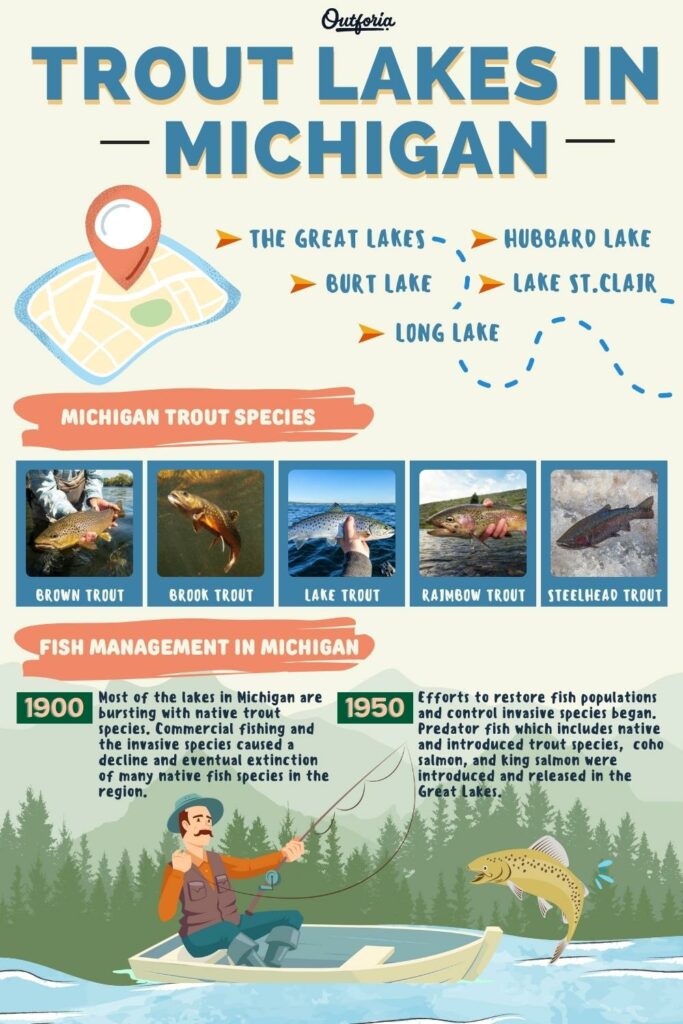
SHARE THIS IMAGE ON YOUR SITE
<a href="https://outforia.com/trout-lakes-in-michigan/"><img style="width:100%;" src="https://outforia.com/wp-content/uploads/2022/12/trout-lakes-in-michigan-infographic-1222-2-683x1024.jpg"></a><br>TROUT LAKES IN MICHIGAN <a href="https://outforia.com">Outforia</a>5 of the Best Trout Lakes in Michigan
With over 11,000 lakes in the state of Michigan, narrowing down which lakes are best for trout fishing can be incredibly difficult. We’ll specifically be looking at which lakes offer the best angling experience.
This is by no means a comprehensive list. The lakes included will all have good accessibility, healthy trout populations, and plenty of resources to help you.
1. The Great Lakes
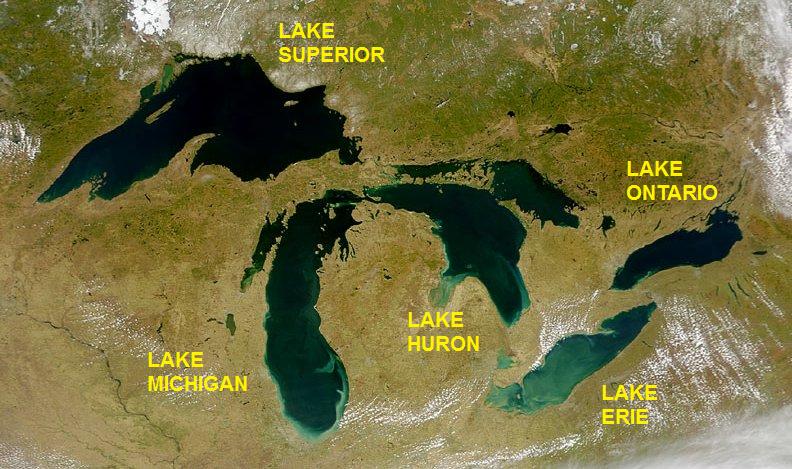
We’ll be lumping Lake Erie, Lake Huron, Lake Michigan, and Lake Superior into one category, as Michigan has shorelines on each of them. All five species of trout are regularly stocked into all four lakes in vast numbers, meaning a fishing trip to any one of the lakes can target any species of trout.
Lake Surface Areas:
- Lake Erie: 10,000 square miles (16093 square kilometers)
- Lake Huron: 23,007 square miles (37026 square kilometers)
- Lake Michigan: 22,404 square miles (36055 square kilometers)
- Lake Superior: 31,700 square miles (51016 square kilometers)
Because of annual stocking, trout numbers are incredibly high. With the vast size of the lakes and the sheer length of shoreline Michigan shares with them all, they’re incredibly accessible, whether you take out a boat or not.
It’s also incredibly helpful to fish in the Great Lakes, as there are numerous guide services, hundreds of target species outside of trout, and more water than you could fish in a lifetime.
2. Hubbard Lake
Outside of Caledonia, you’ll find the pristine waters of Hubbard Lake. With a surface area of 8,800 acres (35 square kilometers) and 27 miles (43 kilometers) of shoreline, there’s more than enough space to search for trout.
The deepest point of the lake is 85 feet (26 meters) and it freezes over in the winter for safe ice fishing. Hubbard Lake has three main boat launches, as well as boat, kayak, and canoe rental stations.
Trout are regularly stocked in the lake and you can find all five species within its depths. Aside from trout, you also have the opportunity to fish for muskies, yellow perch, largemouth bass, walleye, northern pike, and sunfish.
Aside from fishing, Hubbard Lake offers excellent opportunities for watersports, camping, and boating.
3. Burt Lake
In the 17,000 acres Burt Lake, you’ll find excellent opportunities to target rainbow and brown trout. The lake is located at the northern end of the lower peninsula, right off of Indian River, Michigan.
Burt Lake offers several public boat launches, numerous fishing guides, and boat, kayak, and canoe rentals. Its 35 miles (56 kilometers) of shoreline allow plenty of access without a boat and the lake is known for being an excellent ice fishing lake.
Aside from rainbow and brown trout, you can also find world-class fishing opportunities for bass, catfish, crappie, walleye, trout, bluegill, sunfish, perch, muskie, northern pike, and sturgeon.
4. Lake St. Clair
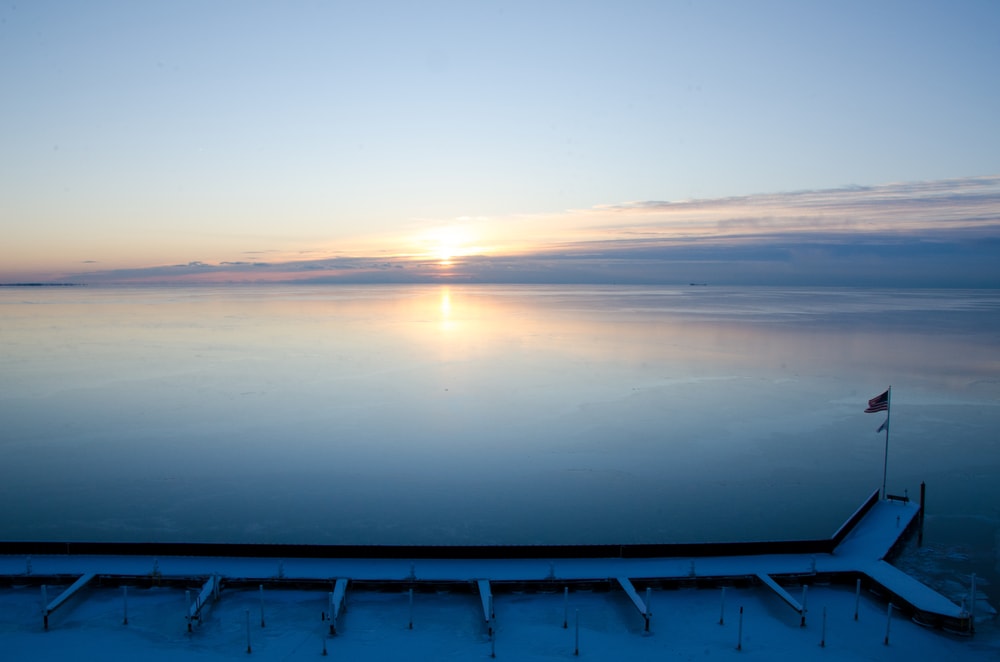
Outside Detroit and half in Canada, half in Michigan lies Lake St. Clair. The big draw to Lake St. Clair is the rainbow trout population and the consistent catches of trophy muskies, yellow perch, walleye, and northern pike.
Lake St. Clair has a surface area of 275,000 square acres and over 130 miles (209 kilometers) of shoreline. The lake is an excellent vacation spot in addition to having an amazing rainbow trout fishery, with numerous boat ramps, campgrounds, RV parks, dining, shopping, and comfortable hotels.
Fishing guides are available to help you target every species found in the lake, making angling easily accessible for beginners. In the lake, you’ll find largemouth bass, smallmouth bass, channel catfish, crappie, walleye, rainbow trout, yellow perch, muskie, northern pike, and sturgeon
5. Long Lake
If you’re looking for lake trout then look no further than the 5,600 acres Long Lake, located just north of Alpena. The lake is full of deep channels, underwater ledges, and rocky outcrops along the lake’s 25 miles (40 kilometers) of shoreline.
Outside of big lake trout, Long Lake is famous for big, heavy smallmouth bass. You won’t need to leave the lake to have an extended stay either, with plenty of camping, lodging, dining, and supplies available around it.
Ice fishing becomes extremely popular in the winter and offers amazing opportunities for catching walleye, perch, and northern pike. You can rent a boat at the marina or cast out into deeper waters right from the lakeshore.
You may also like: Learn the 15 Species of Freshwater Fish You Can Spot in Florida: With Images, Facts, Descriptions, and More!
Fish Management in Michigan
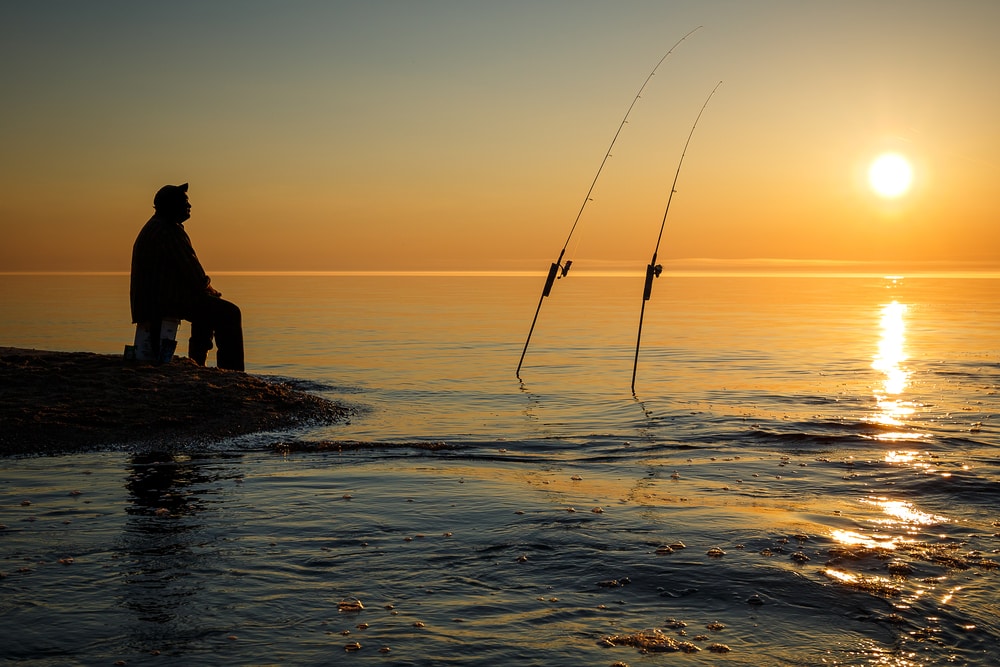
To understand the fisheries of Michigan, it’s important to learn about the history of native and introduced fish species in the state.
Prior to the 1900s, the Great Lakes and most of the lakes in Michigan were bursting at the seams with native trout species. A combination of commercial fishing and invasive species led to a steep decline and eventual extinction of many native fish species in the region.
Commercial fisheries decimated populations of sturgeon, trout, and whitefish. A shipping canal to bypass Niagara Falls led to sea lampreys entering the Great Lakes and preying on native fish. Through tributaries and streams, invasive species were also able to enter many of the smaller lakes in the state.
The collapse of fisheries led to massive economical and environmental losses. Sea lampreys began to be controlled by spreading special pesticides called lampricides. These killed off juvenile lampreys without harming other aquatic species.
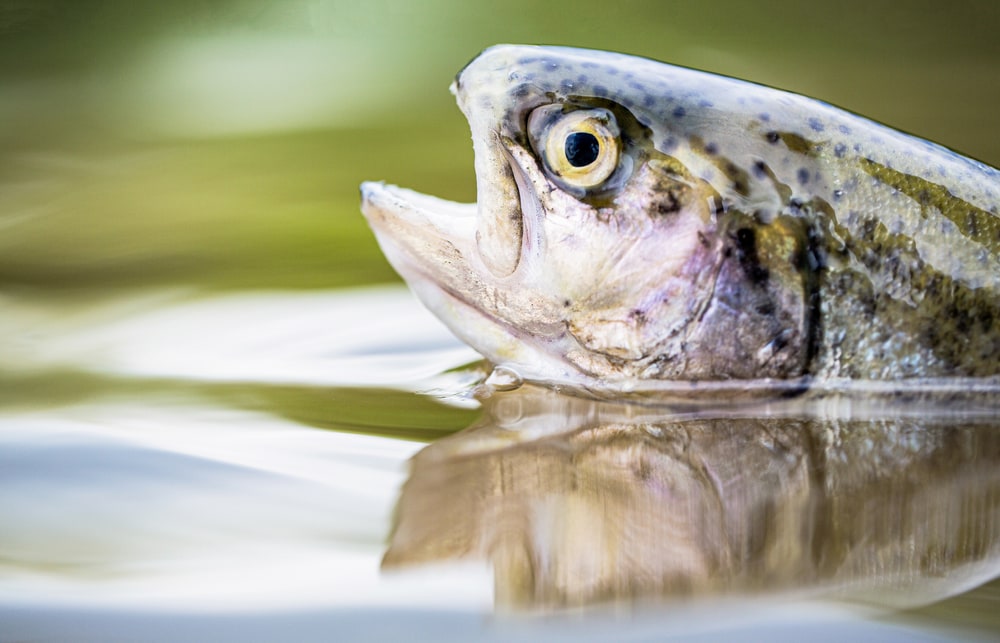
In the 1950s, the government began efforts to restore fish populations and attempt to control invasive species. This led to the introduction of predator fish that included native and introduced trout, coho salmon, and king salmon started being released into all of the Great Lakes.
The introduction of game fish led to a boom in the sportfishing industry of the state, making it one of the best freshwater fisheries in the world. Despite these efforts, the problems are still ongoing today.
While the introduced and repopulated fish species survive well and serve their purpose in lakes, they haven’t been able to successfully reproduce and sustain populations naturally. In part, this is because many of them, like salmon, migrate to spawn.
Wildlife management bodies in Michigan release millions of trout each year into Michigan lakes. Eggs are brought in or collected in tributaries and these fish are raised in hatcheries run by the state. Once large enough, they are then released into the Great Lakes and designated trout lakes.
You may also like: Know the 10 Amazing Turtle Species in Michigan: With Images, Facts, and More!
Sportfishing in Michigan
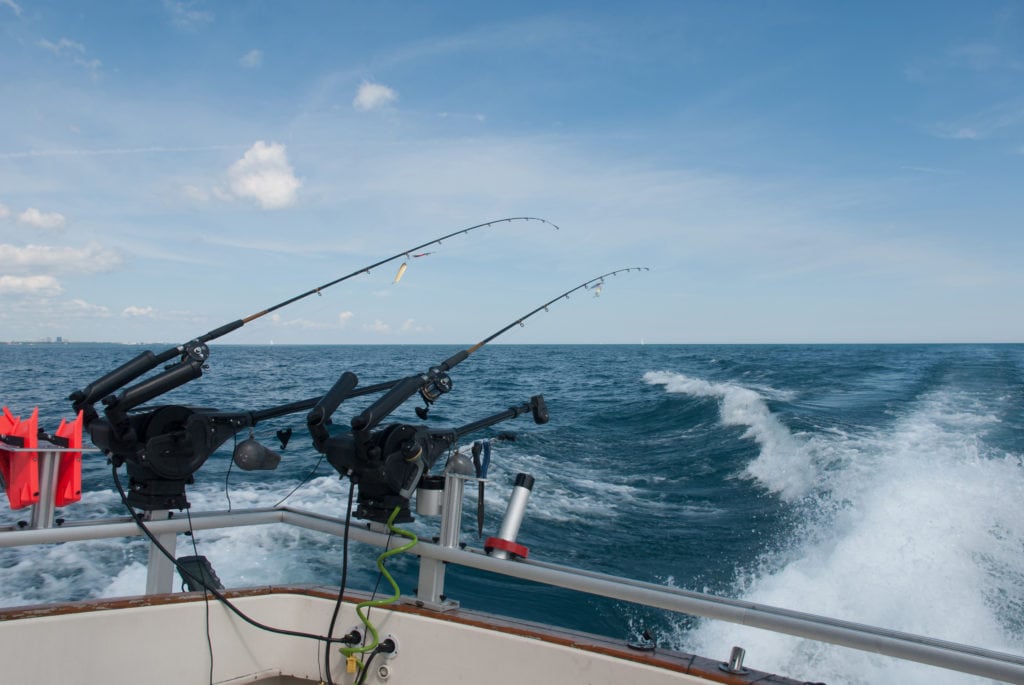
Sportfishing is a major part of Michigan’s economy, bringing thousands of visitors to the state each year. Not only does this keep communities around the lakes viable, but brings in money for the state. Each government-run operation, from boat ramps to licensing, brings in money for the state that goes directly towards their management programs.
License sales, in particular, are the main source of income for fishery programs. Sportfishing essentially pays for all the programs that monitor fish populations, raise and release fish, control invasive species, and clean pollutants from the lakes.
While the lakes were thrown into chaos with the elimination of native species, fishery management programs have allowed for stable populations of fish in the lakes. Even with the purposefully introduced species, it has seemed they have done more good than harm.
Management programs are ongoing, with designated trout lakes specifically being managed to ensure healthy populations of trout. One day, the hope is that native and introduced species will get the foothold they need to reproduce on their own, but for now, the state governments continue to stock fish.
You may also like: Check out the 23 US Largest Lakes and Where They’re Located: With Images, Facts, and More!
Threats to Fish in Michigan
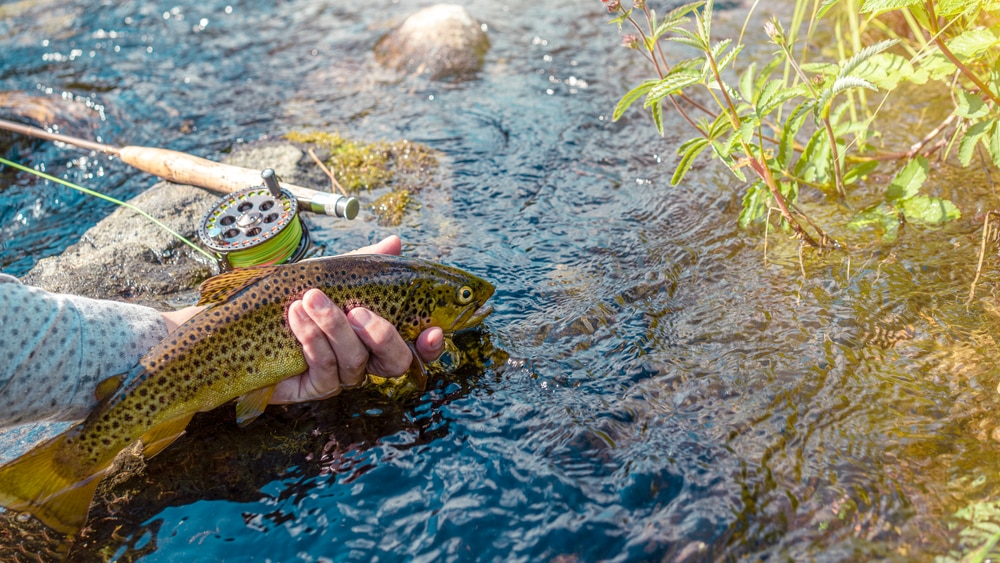
With fish stocking programs in full effect and strict commercial fishing rules, the biggest threats to trout populations today come from invasive species. Sea lampreys are particularly devastating to native populations.
Mostly held in the Great Lakes, sea lampreys naturally occur in the Atlantic Ocean. They prey on fish by sucking to their sides and drinking blood from their prey. In the ocean where lampreys evolved side by side with the fish around them, most fish don’t die from lamprey feeding. In lakes where they are invasive, most of the fish can’t handle being fed on.
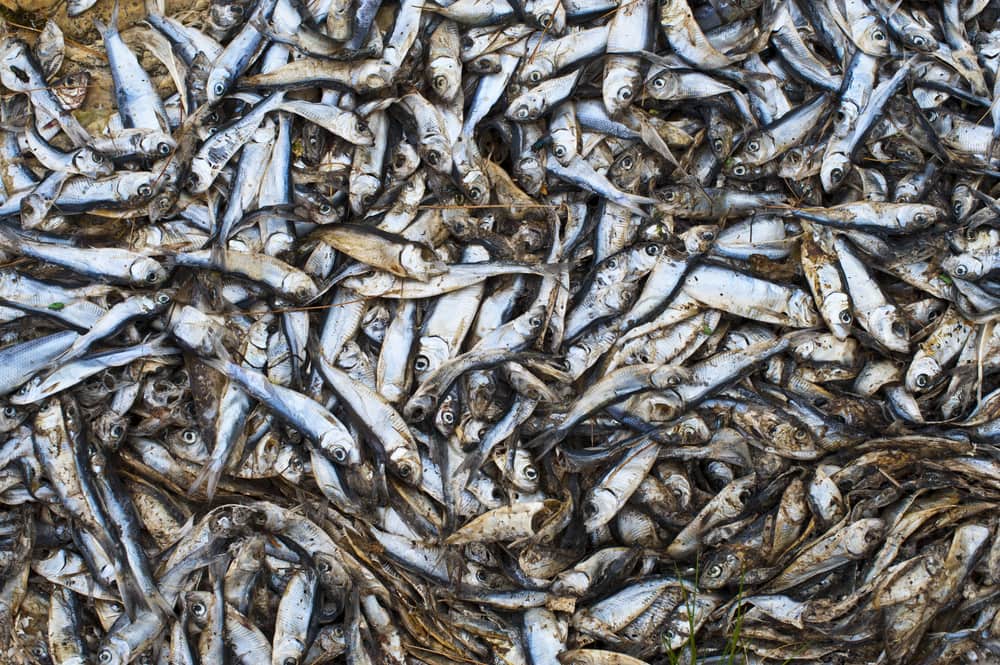
Alewives are a small shad species that are credited in part with the decline of fish species in the Great Lakes. They feed on zooplankton for the most part, but will also eat through thousands of fish eggs. This adds pressure to populations that aren’t used to it, causing them to decline in number.
Salmon were introduced to specifically deal with alewives, and the small shad have become an important staple of many predatory fish’s diets.
Another looming threat for trout species in Michigan is global warming. Trout are coldwater fish and can’t survive or reproduce in warmer water. It’s estimated that an average of 1.5 degrees Fahrenheit change in air temperature can result in a 7-16% decline in trout populations.
Water quality is incredibly important for trout as well. Agricultural runoff, stirred sediment from natural floods, and pollution can all lead to huge die-offs of fish.




